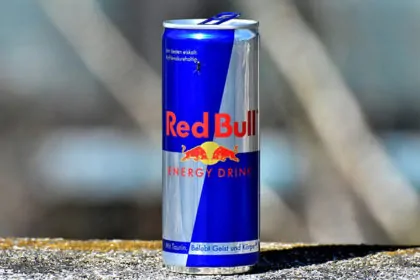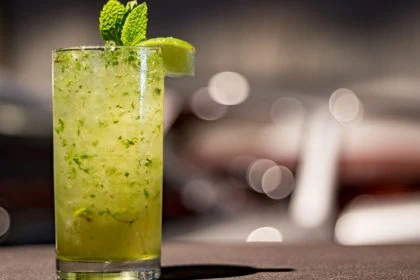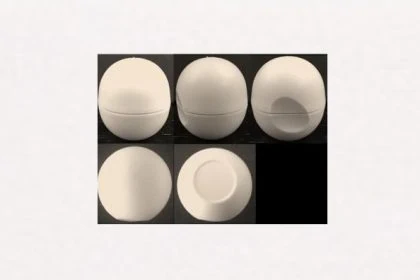The description of the systematic arrangement of the colours is a legitimate requirement for a colour combination mark, the ECJ ruled today and confirmed the invalidity of the Red Bull colour combination mark blue-silver.
 Red Bull had filed two colour combinations as Union trade marks in 2002 and registered them as Community trade marks in 2003. The two signs protected by trade mark law were reproduced graphically in the form of two parallel vertical blocks, each with the same surface, one in blue and the other in silver. The corresponding description indicated for the first sign that the ratio of each of the two colours was “about 50% – 50%”, and for the second sign that the two colours stood side by side and were applied in equal parts.
Red Bull had filed two colour combinations as Union trade marks in 2002 and registered them as Community trade marks in 2003. The two signs protected by trade mark law were reproduced graphically in the form of two parallel vertical blocks, each with the same surface, one in blue and the other in silver. The corresponding description indicated for the first sign that the ratio of each of the two colours was “about 50% – 50%”, and for the second sign that the two colours stood side by side and were applied in equal parts.
Red Bull’s colour combination mark was declared invalid following opposition by Optimum Mark (Poland). This decision was confirmed by the Cancellation Division as well as by the European Court of First Instance (CFI). The contested mark does not satisfy the requirements of Article 7(1)(a) of Regulation No 207/2009 since its graphic representation does not satisfy the conditions laid down by case-law.
Accordingly, a graphic representation must be clear, precise, self-contained, easily accessible, intelligible, durable, objective and systematically arranged in such a way that the colours are joined in a predetermined and consistent manner.
Definition of the color mark
A colour mark is a sign consisting of a colour without shape or contour or of a combination of colours.
Therefore, a colour mark consisting of a single colour cannot be represented by a mere colour sample alone, in particular because a colour sample may change over time. A colour description in accordance with an internationally recognised colour classification system is mandatory.
The same applies to the requirement for colour combination marks that the spatial and uniform arrangement of the colours concerned must be described, as must the relationship between the colours concerned (Heidelberger Bauchemie judgment ((C 49/02, EU:C:2004)).
There is a general interest in ensuring that the availability of colours is not unduly restricted to all other economic operators. Moreover, a color is usually a simple property of things. A trademark, on the other hand, should always be an indication of the origin of the product. The registration of an abstract colour mark therefore always depends on the context.
Red Bull referred to this in its argument before the Court. The beverage manufacturer refers to the very high degree of recognition achieved by Red Bull’s colour combination and refers to the distinctive character of that colour combination.
Red Bull argued that the registration of the mark had already been refused by the unjustified requirement of a binding spatial arrangement of the colours, without being able to prove, in the context of the examination of distinctive character, the acquired distinctiveness or even to clarify the description of the two marks.
In addition, Red Bull argued that the interpretation of Article 7(1)(a) and (4) CTMR1 in the case of colour combination marks infringes the principles of equal treatment and proportionality.
The European Court dismissed Red Bull’s action in its entirety. The description of the systematic arrangement of the colours is a legitimate requirement for a colour combination mark and clearly necessary in order to fulfil the condition of clarity and precision which a mark must fulfil, the ECJ ruled, once again making clear the fact that colours may not be unduly limited for all other economic operators and that this alone requires care and clarity in the scope of protection of a colour mark.
Principles of equal treatment and proportionality
In the judgment under appeal by Red Bull, the CFI had established the premiss that colour combination marks were naturally less precise than other types of marks. The Court of First Instance had held that, unlike three-dimensional marks, colour marks are not per se bounded either by space or by shape or, unlike figurative marks, by contours; they are visual and not perceptible by sound or letters, as is the case with audio or word marks. From this, the CFI concluded that the protection afforded by these marks must be defined with reasonable and particular precision.
In today’s judgment, the ECJ did not explicitly confirm this, but clearly refers to the requirements of Article 4 of these Regulations. Accordingly, the ECJ clarified that an applicant must provide a graphic representation which clearly and precisely defines the subject-matter and scope of the protection sought. If the application is accompanied by an description of the sign, the ECJ added, that description must serve to clarify the subject-matter and scope of the trade mark protection. Such a description must not conflict with the graphic representation of a mark or cast doubt on the subject-matter and scope of that graphic representation (see also Hartwell C:2019:261 ).
In its judgment, the CFI rightly stated that the representation for the registration of the disputed trademarks would enable a large number of reproductions, the ECJ confirmed the CFI’s judgment that this did not fulfil the requirement of clarity of any trademark application. Furthermore, the requirement that a mark consisting of a combination of colours must have a systematic arrangement linking the colours in a predetermined and uniform manner cannot transform that type of mark into a figurative mark, since that requirement does not mean that the colours must be defined by contours.
The ECJ therefore dismissed Red Bull’s action in its entirety.
Would you also like to protect your trademark or brand?
Our lawyers are experienced in trademark and patent law, national and international law.

Sources:
Urteil EuGH Red Bull EU:C:2019:641
Image:
Alexas_Fotos / pixabay.com / CCO License







Leave a Reply